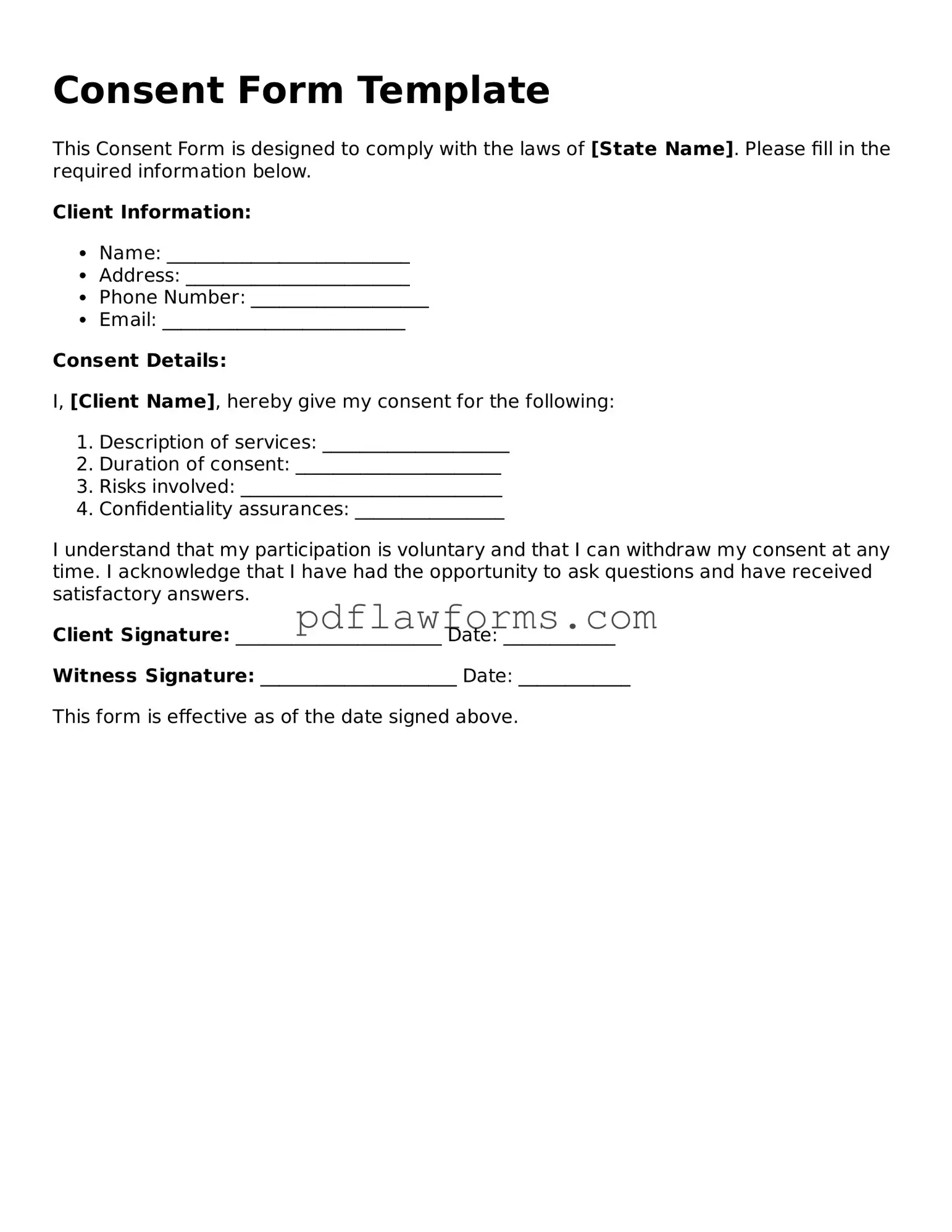Filling out a consent form might seem straightforward, but many people make common mistakes that can lead to complications. One major error is not reading the entire form before signing. Many individuals rush through the process, assuming they understand the implications without fully grasping the details. This can result in unintended agreements or misunderstandings about what they are consenting to.
Another frequent mistake is failing to provide accurate personal information. It's crucial to ensure that names, addresses, and contact details are correct. Inaccuracies can lead to delays or issues with communication, especially if follow-up is needed. People often overlook this simple step, thinking it won’t matter, but it can have significant consequences.
Some individuals neglect to ask questions if they are unsure about specific terms or clauses. Consent forms often contain complex language that can be confusing. Instead of seeking clarification, many people sign without understanding. This can lead to regret later on when they realize they agreed to something they did not fully comprehend.
Additionally, people sometimes forget to check the date on the consent form. An outdated form may not be valid, which can create problems down the line. Always ensure the date is current before submitting any documents. This small detail can save a lot of hassle.
Another common mistake is not keeping a copy of the signed consent form. Once signed, individuals often assume they will remember the details or that the organization will provide a copy. However, having a personal copy is essential for reference, especially if questions arise later about the agreement.
Some individuals also fail to consider their right to withdraw consent. Many consent forms include information about the ability to revoke consent at any time. Ignoring this aspect can lead to confusion about one’s rights and options in the future.
Finally, people sometimes sign consent forms under pressure. Whether it’s a time constraint or feeling rushed by a provider, this can lead to hasty decisions. It’s important to take the time needed to review the form and ensure that signing is a well-considered choice.
